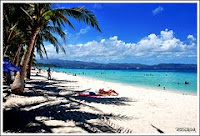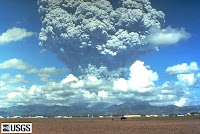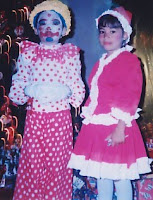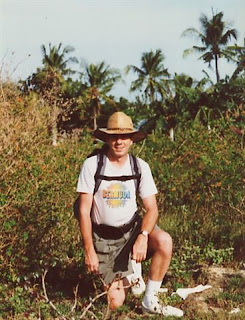
 New Year's Eve in the Philippines can sometimes be very dangerous. Many Filipinos celebrate by shooting off fireworks and guns into the air. Unlike in America, there is no limit to the size or power of the fireworks. I have seen some firecrackers, 2-foot tall & 9-inches wide. In the Philippines they believe the New Year should begin with a lot of Noise to help scare-away Evil and to drive away any Mis-fortune. As a result, dispite Government and press warnings to use caution regarding fireworks & guns, every year thousands of Filipinos are killed or maimed by the celebrating explosions and spent falling bullets -- not to mention the Terrific fires that sometimes result! Such coverage dominates our T.V. news from several days before New Year's to several days after. We even have a number of relatives who make their own fireworks -- sometimes more like bombs than firecrackers --to sell throughout the neighborhood and give out to other family members.
New Year's Eve in the Philippines can sometimes be very dangerous. Many Filipinos celebrate by shooting off fireworks and guns into the air. Unlike in America, there is no limit to the size or power of the fireworks. I have seen some firecrackers, 2-foot tall & 9-inches wide. In the Philippines they believe the New Year should begin with a lot of Noise to help scare-away Evil and to drive away any Mis-fortune. As a result, dispite Government and press warnings to use caution regarding fireworks & guns, every year thousands of Filipinos are killed or maimed by the celebrating explosions and spent falling bullets -- not to mention the Terrific fires that sometimes result! Such coverage dominates our T.V. news from several days before New Year's to several days after. We even have a number of relatives who make their own fireworks -- sometimes more like bombs than firecrackers --to sell throughout the neighborhood and give out to other family members.Additional New Year's Eve Good-Luck customs in the Philippines include sharing the 13 round lucky fruit and the traditional media noche, or mid-night meal. The round fruit symbolize coins and properity in the new year. The women gather the fruit in the days leading up to New Year's Eve and as the family gathers to ring in the New Year, the fruit plate or basket is passed around among family members to share in the eating to help bring us all a properous year ahead. At the stroke of Midnight everyone in the family cheer and hug each other and march around the house, entering every room downstairs and upstairs, banging pots & pans and shaking tin-cans full of coins making a loud racket to frighten away any evil spirits or bad luck in the house created during the past year in the hopes of beginning the new year with a "clean slate." Meanwhile, many of our neighbors run their motorcycles up and down the street with a lot of cans dragging behind to make a lot of loud noise outside while at the same time, fireworks are constantly going off -- punctuated by an occasional really loud explosion & various ariel displays -- to create a type of war-zone atmosphere!
Once we have made several laps through the house making noise, the family sits down to a fine meal consisting of pansit -- or spaghetti, if that can be afforded -- to promote long-life, plenty of rice to insure that the family will not go hungry & will have plenty throughout the year, any kind of a beef dish to insure that everyone in the family will be hard-working throughout the year like the carabao -- absoutely NO chicken dishes so no one in the family will be "scratching out" a living in the new year and NO pork dishes to insure that no one in the family will become lazy or lay around like the pig -- and any kind of a shrimp dish and plenty of fish to insure an "active" prosperous year, the rest of the fruit to also symbolize good health and wealth in the New Year, and a big dish of biko, the sweet brown-sugar rice-cake desert, to promote closeness -- or stickiness -- and sweetness among the family members throughout the year.
Another popular Philippine custom for New Year's Eve and and New Year's day, is for many of the girls and women to wear dresses, skirts or blouses having a Polka-dot pattern, many making their own in the days leading up to Christmas and New Years. Polka-dot clothing, too, is a symbol for good luck and properity for the family in the new year. The numerous "dots" are supposed to symbolize coin-money.



























